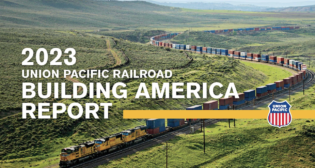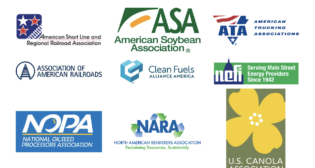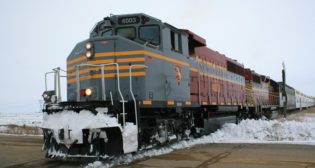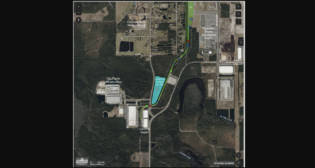
TD Cowen: Day 1 Transport Conference Takeaways
Written by Jason Seidl, Matt Elkott, Elliot Alper and Uday Khanapurkar, TD Cowen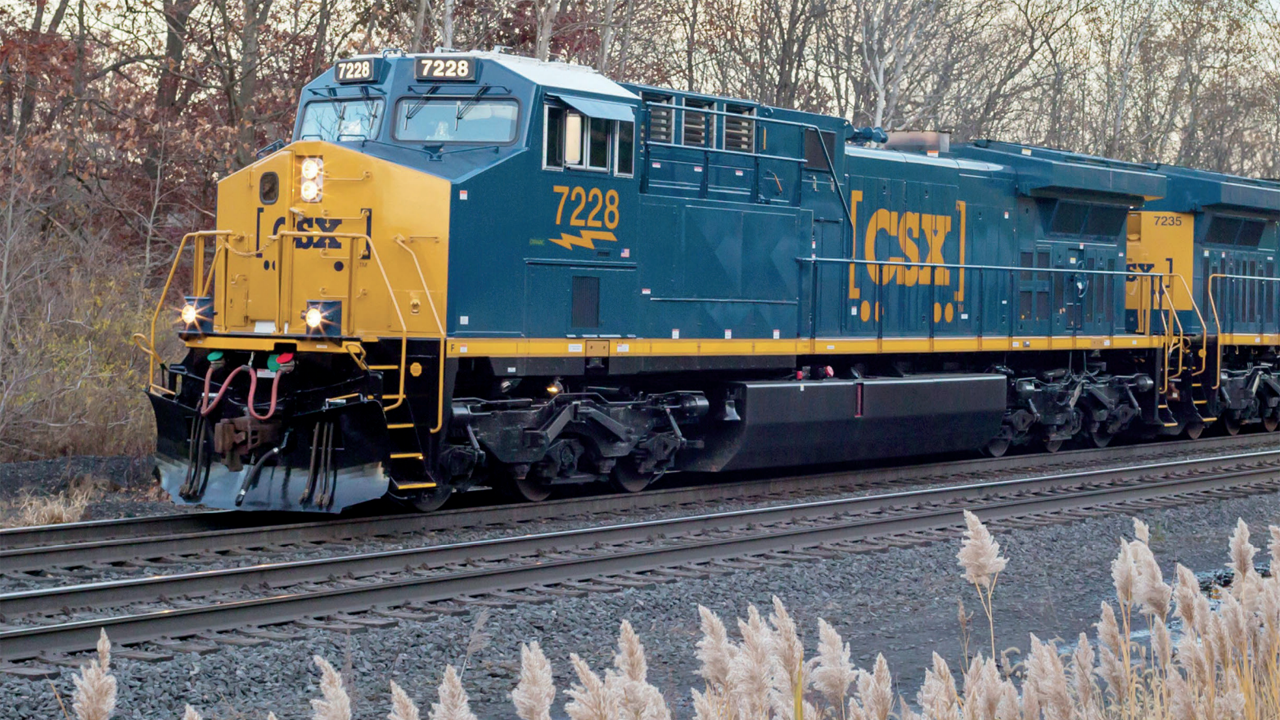
We hosted freight industry “fireside chats” and presentations on Day 1 of the TD Cowen 16th Annual Global Transportation Conference, being held Sept. 6-7 in Boston. While we heard that the rail outlook is soft with a weak volume outlook and muted peak season offset by pockets of strength (primarily in grain), railcar orders and inquiries remain solid and additional locomotive parkings seem unlikely in big numbers in the near term.
Following is our insight from the first day:
CSX:
• CSX confirmed its financial guidance of low single-digit RTM (Revenue Ton Miles) growth this year, despite mixed operations across product segments. Autos, minerals and met coal have proven to be strong this year, while chemicals, forest products and international intermodal have been weak. Service improvements have allowed for easier pricing conversations with customers.
• Disruptions at the Panama Canal, if prolonged, could facilitate moves back to the West Coast. The portion of this business destined for the Northeast on long-haul routes would generate better yield.
• CSX appeared slightly more optimistic compared to second-quarter earnings, largely driven by a strong projected grain season. Strength in the Midwest crop has outweighed some weakness in the South. During second-quarter earnings, customers appeared mixed on peak season that had not been seen yet.
• Furloughs, such as the minor one recently announced by Union Pacific, are unlikely in the near term. CSX intends to lean into attrition and hiring pauses as a first measure instead if softness persists.
• CSX expressed optimism on nearshoring momentum calling out autos, EVs, batteries and metals and minerals as key areas of development. The company is overseeing more than 500 industrial development projects with a critical mass located in the Southeast and positioned well to benefit from nearshoring trends. Cross-border service with Canadian Pacific Kansas City is expected to begin in 2024.
XPO:
• Following XPO’s August update release ahead of our conference, management continues to bring new freight onto its network while staying disciplined on price and service. Claims as a percentage of revenue have improved sequentially despite bringing on the new shipments, which is very impressive in our view. Yield is expected to grow faster than tonnage growth in the third quarter. Approximately half of the 10% Yellow capacity left the LTL (Less-Than-Truckload) market to other modes of transportation, which should ultimately make its way back to LTLs, though may take a couple of years, according to management.
• The remaining net new doors XPO plans to add (approximately 400 before the end of the year) are primarily going to be expanding existing terminals. XPO appears interested in some Yellow terminals (South and Southeast) but it ultimately depends how the banks/bankruptcy procedures shake out.
• The Yellow disruption has given XPO the opportunity to hire high-quality regional sales employees, though less so on the driver side given the different work style compared to Yellow drivers and dockworkers. Five years from now, management only sees the LTL moat growing given supply leaving the market, on top of domestic manufacturing projects that should lift the tide for all NA transports.
GXO:
• GXO’s pipeline remains robust as customers look past current weakness in planning their outsourced logistics needs (contracts are typically five years long). The company expects larger contracts (such as second-quarter’s Sainsbury win) to become more common as customers are more willing to outsource their entire warehousing operation. GXO’s wins are coming from a broad base of sectors with food services and high tech growth (spurred by CHIPS act).
• AI (Artificial Intelligence) is expected to drive continued efficiency gains. GXO disclosed that robotic packing arms at a facility enabled packing of 800 units per hour, a doubling over prior levels. This tech also enables GXO facilities to handle 90% of a retailers skews compared to 70% traditionally. GXO’s new Chief Automation Officer is tasked with modularizing and expanding AI and efficiency initiatives more broadly to warehouses.
• GXO concurred with XPO on the strength of the Europe business. Businesses in the region are reportedly keen to expand their presence in the U.S. Further, second-half volumes in the Europe business face easy comps, and GXO expects a modest peak to occur this year in the region.
Short Lines:
• Current market demand has been mixed at best. Service metrics from Class I’s have seen notable improvement, though this is partially attributed to rail volumes tracking well below pre-Covid levels. The largest opportunity for new carloadings is stemming from nearshoring, with more than 500 projects currently in the pipeline (compared to 300 pre-Covid), according to one short line panelist. Autos, LNG and steel were all markets that panelists highlighted as opportunities in the coming years.
• Our short line panelists echoed CSX’s comments about labor resourcing being broadly sufficient though tight in certain locations. As we have stated previously, panelists noted that low volumes have played a significant role in service improvements. Short lines highlighted challenges retaining labor with one noting that turnover rates are up to 18%-20% compared to 10% pre-Covid.
• Short line panelists’ consensus was that regulation would add significant complexity to operations and thus impact service quality. Regions with network density such as Chicago would be especially impacted. Panelists also flagged regulatory risk as a Top 3 issue in the rail industry as we have also emphasized previously.
• There continues to be a lot of attention on the M&A market; new buyers are coming into the business, which has led valuations to double compared to a few years ago. This has shown the value of rail and the potential of incoming infrastructure spending coming down the pipeline. Given heightened valuations, our panelists emphasized the value of investing into their own business (investing in their own fleet) and only pursing a deal if it really makes sense.
Railcars:
• Railcar order and inquiry activity remains fairly solid, holding up well in the face of stubbornly weak rail volume.
• Lease rates are still holding up at high levels, after seeing sequential growth quarter-over-quarter for the past 12 quarters.
• Strength is across various car types like autoracks, boxcars and covered hoppers (strong demand for bio-diesel, recyclables, construction materials, among others). Chemical and ag are softening.
• The Greenbrier Companies (GBX) noted that they see growth from the leasing side of business more than the manufacturing side. They are focused on continued gross margin improvement and cost reductions.
• GATX does not appear to be seeing any easing in lease rates despite continued rail volume weakness. They expect stronger growth opportunities in the EU, largely because of an older fleet age and the need for replacement. Additionally, there is a big push toward moving traffic from the roads to the rails in the EU. India remains a very promising growth opportunity.
• Secondary market valuations strength continues in the face of higher interest rates.
Locomotives:
• Significant additional locomotive parkings seem unlikely in the near term ahead of the grain season later this year, noted CSX.
• Several of our speakers and panelists noted Class I velocity metrics are more nuanced than they look—more specifically, the last mile is not being incorporated in the railroad numbers.
Construction Equipment:
• HEES management noted that they are seeing continued strength across the board, largely driven by non-resi activity in the U.S.
• Additionally, they are seeing robust contractor backlogs, providing strong visibility ahead.
• Rental rates remain elevated. Access to equipment from the OEMs has improved, although it is still far from pre-pandemic levels. The important change is that the OEMs appear to have gotten better recently at predicting delivery times.
• Management believes we are only in the second inning of the benefits from the three infrastructure packages.
• Strength in data center construction continues.
• Tighter credit conditions have been supplementary for rental companies as higher financing costs aid rental rates.
• Overall, management appeared decidedly more positive about the broader environment
than they were three months ago.
